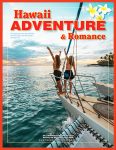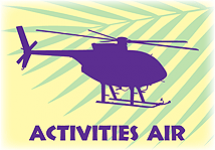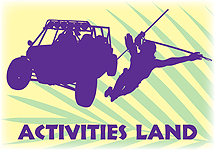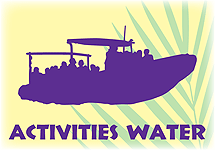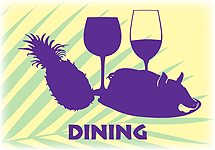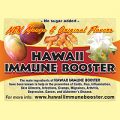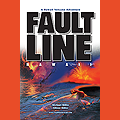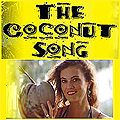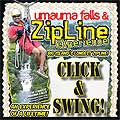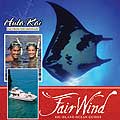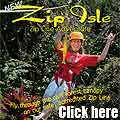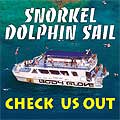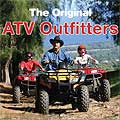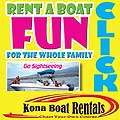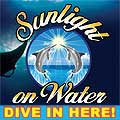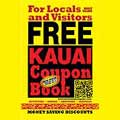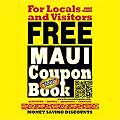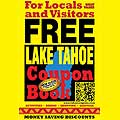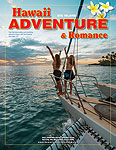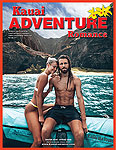Day 1 – Time to relax and unwind from your flight and. Garb some sunscreen, hats, towels, bathing suits and snorkel gear and plan and enjoy a day at the awesome beaches of the Big Island.
Welcome to the Big Island of Adventure and Romance
This is a big, big island. All three of other main Hawaiian Islands could fit into the Big Island with more space leftover. Home to Kilauea, the world’s most active volcano, the Big Island has incredible geological formations and a variety of climates and weather patterns. Its vast beauty and intriguing landscape are ideal for families and couples to discover together.
The Kona area offers warm temperatures and a calm wind that is great for water sports. The vog (volcanic air) often picks up by the mid-morning, but it also contributes to Kona’s beautiful sunsets. Driving south toward the volcano, or north towards Waikoloa, the winds kick up, thus elevating the vog and clearing the skies.
On the Kona side the water is the place to be – watch whales (Dec-Apr) or dolphins spin and jump. Night dive with manta rays, snorkel with rainbow colored fish and green sea turtles. Rent a stand-up paddle board and enjoy the ocean.
The lush Hilo side has a large local population, cool ponds, some beautiful beach coves, just past Hilo Bay, many streams and waterfalls, with a classic, old still downtown area. Hamakua, Hawi and Waimea districts are so unique and different, they are like their own separate islands. On the newly altered and paved Saddleback Road, now renamed Senator Daniel Inouye Highway, you can cross the island in about 1 1/2 hours.
Whether it’s on the land, water, or in the air, there is something for every age and interest. Try a zip-line, an ATV ride, or a Kona boat trip. Find a secluded beach, learn about ancient Hawaiian history, and go for a romantic sunset drive. Take the whole family for a hike through a lush valley or botanical garden. Plan a day at the unique Hawaii Volcanoes National Park (see our Volcano article). Try some new and tasty foods. There are also all kinds of shopping and dining options on this island.
So whether it’s your first trip here or not, there’s a special feeling about being in this magical place. It’s custommade for romance. The Big Island begs you to slow down, put away your worries, and just relax. Please help (kokua) us keep this publication successful, by letting our advertisers know you read about them in Adventure and Romance Magazine.
Big Island’s Magnificent Beaches
Hapuna Beach State Park is a beautiful white sand beach located at Mile Marker 69 on Hwy 19. The beach is suitable for body surfing, swimming and snorkeling. With plenty of parking and public facilities, this is one of the best white sand beaches on the island.
Just south of Hapuna in the Waikoloa Beach Resort, you’ll find ‘Anaeho‘omalu Beach or A Bay. This expansive gray sand beach is good for swimming, snorkeling and surfing. There’s a trail that runs along the shoreline that leads to the Anchialine (AN-key-a-lin) Ponds.
Heading south towards Kailua-Kona, is Kua Bay which is a beautiful sand bay. There can be snorkeling on the northern side of the beach and the boogie-boarding and body surfing when the surf is up. There are showers and bathrooms there.
Nearing the Kona airport is Kekaha Kai State Park. Kekaha Kai has a sand bay, two beaches, fresh water springs and tidepools, with surf spot and snorkeling options, compost toilets, but no showers. A gated, non-paved lava road is the access.
Kailua-Kona is known for its smaller, more intimate white sand beaches. In downtown, there is a small protected beach on either side of the pier that is good for snorkeling and swimming. Most of the time this beach is calm enough for young children.
Magic Sands Beach (that turns into a rocky shore in the winter) is just south of Mile Marker 4. It is a favorite spot for swimming and snorkeling, boogie boarding and body surfing.
A mile and a half further south is Kahalu‘u Beach Park, a great place to learn to surf and to snorkel with fish and turtles. Near south point is Punalu‘u Beach Park, a beautiful black sand beach with bathrooms and showers.
Green Sand Beach, just past South Point, is accessible via a dirt road or about a 30 minute hike. Its green sand is produced by an accumulation of olivine from volcanic eruptions.
Use caution when entering in the ocean as the surf and currents can be powerful and potentially dangerous.
Day 2 – Visit a waterfall. There are many ways to experience the waterfalls. Go on your own. Rappel or Zipline, or ride and ATV to one. Choose from: Botanical World Adventures (808) 963-5427 or The Umauma Experience (808) 201-6140 or ATV Outfitters (808) 889-6000 or Hawaii Forest and Trail (808) 400-5772. Click HERE to read article.
Hawaii’s Most Beautiful Waterfalls
Want a romantic way to spend the day? Explore The Big Island’s waterfalls. With more than 130 inches of rainfall per year at the coast, and over 200 inches in the mountains, the Hilo side produces some of the most abundant waterfalls in Hawaii. The 18-mile Wailuku River (“water of destruction”), the longest river in the state, funnels Hilo’s massive rainfall into cascades of power and beauty.
Three waterfalls are a ten-minute drive from downtown Hilo. Rainbow Falls drop 80 feet into a large pool, creating a prism of rainbows. (From downtown Hilo, take Waianuenue Ave – drive mauka, mountain side, about 1.6 miles and bear right. Follow the signs for the falls).
The Boiling Pots Falls are a testimony to the awesome force of rushing water as it barrels downstream and bubbles up from layers of submerged lava. Take the dirt path to the right of the viewing platform just a few feet for the best view of the churning pots below and the five-spouted Pe’epe’e Falls to your far left. (From Rainbow Falls, continue up Waianuenue Ave another 1.4 miles, following the signs and turning right onto Pe’epe’e St.)
A lush 20 min. walk through a dense forest will take you to the top of Waiale Falls where you can meander from one pool to another, except during heavy rainfall when it’s dangerous. Be sure to stop at all the lookouts along the way for a view of the falls. From Boiling Pots, continue up Waianuenue Ave just under a mile, cross the first bridge and park. Take the trail to the right of the bridge on the waterfall side of the street.
Perhaps the most photographed natural attraction on the Big Island is Akaka Falls, a magnificent waterfall that plunges in a vertical 442 ft. drop into the gorge below. Akaka Falls is accessible via a halfmile circular footpath through lush rainforest where you’ll also see neighboring Kahuna Falls. (Ten miles north of Hilo: take Hwy 19 north, then just past Mile Marker 13 turn left onto Rte 220 toward Honomu and follow the signs.)
The three-tiered and beautiful Umauma Waterfalls are located at Umauma Zipline, (808) 930-9477. Further up the Hamakua coast, the falls of the remote Waipio Valley cascade from the valley’s cliffs at various points. A 4WD vehicle is essential to get down into the valley. For amazing Kohala waterfalls adventures contact Hawaii Forest & Trails (808) 331-3620.
Please tell our advertisers you read about them in Hawaii Adventure & Romance Magazine, Mahalo!
Day 3– Take a morning boat trip. The conditions are perfect for snorkeling and seeing Spinner Dolphins. Whale Watch (Nov-Apr), Go on a night manta ray Snorkel. For tour options call: Body Glove Cruises (888) 208-1683, or Sunlight on Water (808) 896-2480, or Dolphin Discoveries (808) 322-8000, or Fair Wind Cruises (808) 345-4348, or Sea Paradise (808) 322-2500, or Kona Boat Rentals (808) 326-9155.
South of Kona Day Trips
Planning for a fun and adventurous trek south of Kona? Pack swimsuits, towels, water, snacks, snorkel gear, sunscreen, a hat, and water to rinse off with. You will also be covering a lot of miles, so be sure to fill up your gas tank.
Heading towards Captain Cook, you can stop for breakfast at a scenic spot or Café in Capt. Cook overlooking the stunning Kealakekua Bay. Then, head south on Hwy 11 to Hwy 160. Turn west on Hwy 160 and you’ll see the sign for Painted Church Road. Shortly from there, you’ll be at St. Benedict’s Catholic Church, the famous “Painted Church.” In 1904, Father John Velge painted a variety of frescos covering the inside walls and ceiling. It’s a beautiful and unique place.
Returning to Hwy 160, you can venture over to Pu’uhonua o Honaunau National Historical Park, also known as “The City of Refuge.” This is an important, notto- be-missed cultural site. Here, you’ll learn about the Kapu system of laws in ancient Hawaii. Breaking Kapu could result in death and one way to avoid execution was to seek refuge here. Today, the Park displays Hawaiian houses, temples, and petroglyphs. Adjacent to the Park is Honaunau Bay, or “Two Steps,” one of the best snorkeling spots in Hawaii. See endemic fish and invertebrate marine species, as you enjoy the warm, crystal blue water.
Continue south on Hwy 11. You’ll be driving to the southernmost point in the U.S., a.k.a. “South Point.” This area offers many scenic views, but the treasure of South Point is a unique beach called Green Sand Beach. Here the sand includes high amounts of a green crystalline material known as olivine. On sunny days the beach glitters like an emerald jewel. Green Sand Beach is a 2 ¼ mile walk (each way) from South Point. If you’re walking, be sure to bring drinking water. With a 4-WD vehicle, can you drive out to the beach.
Returning to Hwy 11, continue through the small towns of Waiohinu and Na’alehu. If you’re hungry at this point, you may want to eat at the Hana Hou Restaurant and Bakery. Also, stop by Punalu’u Bake Shop and sample some of the incredible baked goods they offer or one of their lunch selections. Further along, between mile marker 56 & 57, turn on Alanui Rd, towards Punalu’u Black Sand Beach and Bay. Created from black volcanic lava, this picturesque beach is a favorite resting spot for sea turtles. You can enjoy swimming and sun-bathing, plus the Park has bathrooms and showers.
After a swim you could continue around the island to the volcano and Hilo side (see Hilo Section) or you could head back to Kona. If you choose to go back to Kona, we recommend dinner at the historic Teshima’s Japanese Restaurant in Kainaliu town, near Captain Cook.
Interesting cultural sites, beautiful nature, and eclectic dining — your South of Kona day trip is sure to be a memorable Hawaii adventure.
Day 4 – Visiting the Volcanoes National Park. Take a guided tour via a luxury van tour. Call Kailani Tours (808) 938-4057, or soar above the volcano on ahelicopter tour with Safari Helicopters (808) 969-1259.
Visit Volcanoes National Park
The Big Island is alive and still growing, geologically speaking. The Pahoa area has seen some amazing flow activity last year, with sadly the loss of over 600 homes and some parts of the scenic coastline. Kilauea has been erupting since 1983, but the 2018 flow was different. The volcano essentially recreated the land. These new and exciting flows are from vents in and around Kilauea, known as the world’s most active volcano.
Kilauea also created over seven square miles of new land along the southern coast. With flow activity changing, you never know what to expect on your visit here.
Along with the lava activity last year, there was a major eruption in the wall of the Halema’uma’u Crater at the summit of Kilauea Crater. This threatened the Jagger Observatory foundation, located near the Crater rim. This was the first major eruption since 1924 when a continual plume of gas, ash, steam and smoke rose a mile above the crater as lava churned in the bottom. Subsequently, Hawaii Volcanoes National Park closed.
Now it is open, a must-see for visitors. From fresh lava flows, to barren fields, to thick, earthy, fern forests and lava tubes, the Park is a unique geological wonderland. The rim of the Kilauea Summit Caldera overlooks the lower, active Halema’uma’u crater, observable from some look-out points.
More recent eruptions resulted in closures of some parts of the Park, due to geological instability and the haze of sulfur dioxide gases. The increase in gases is responsible for the overcast sky, called “volcanic smog” or “vog,” which blows west towards Kona during normal tradewind weather patterns.
Outside the Park, the lava flow formed new fissures in the east rift zone. These lava rivers flow into the sea just four miles from the village of Kalapana, already partly destroyed by lava in 1990. A new gravel road, at the end of Highway 130, is open for vantage points of these flows.
To physically get to the recent flows, it’s an eight-mile round trip via hiking or biking. If you go at night (for the best viewing), make sure to bring flashlights, water, and appropriate clothes for the temperature drop. The gravel hiking/biking road ends about 100 yards from the flow. Follow the rope trail to the left to view the current ocean lava entry from a distant vantage point. These active flows shift like rivers and are potentially dangerous. Therefore, guided tours of the area are recommended for your own safety.
An alternative to the long land trip is onboard a fast and comfortable boat. Once you arrive at the flow area, you’ll feel the heat of the eruption and see the magnificent lava as it streams into the ocean. It’s a fantastic, dreamlike experience.
For some truly mind-blowing, lava photo prints check out Lava Light Galleries located on Alii Dr. in Kona and at Queens Market Place, Waikoloa. Phone: (808) 756-0778.
The Volcano Art Center, in Volcano Village offers Free Forest Tours Monday mornings at 9:30 am. You’ll learn about the Hawaiian rain forests, the last old-growth koa and ’ōhi’a rain forests, and the botanical uses of Hawaiian flora. The hour-long walk takes place rain or shine along an easy, level gravel trail. Be prepared for rain in the rain forest. Donations are appreciated. They help the rain forest restoration and education efforts. Custom Rain Forest Tours are also available for a small fee. Call (808) 967-8222.






